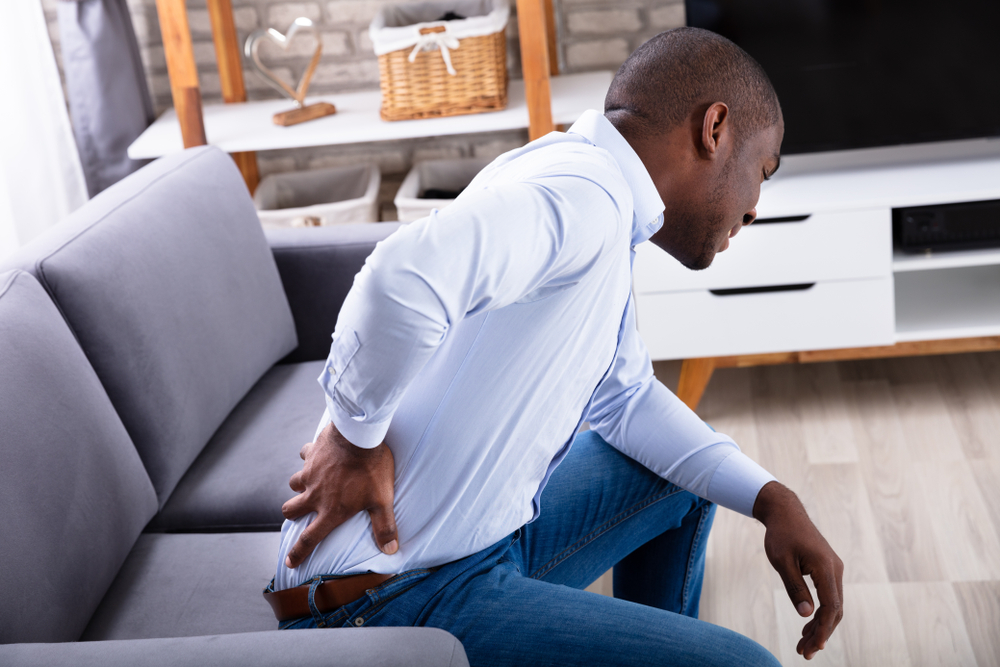Muscle Relaxers Don’t Provide Relief From Back Pain, Analysis Shows


The National Center for Health Statistics reported in July 2021 that 39% of adults in the United States suffer from back pain. The research also pointed out that back pain increases with age, showed bellow like this:
28.4 % of individuals experience back pain between the ages of 18-29
44.3% of individuals experience back pain between the ages of 30-44
45.6% of individuals experience back pain between the ages 65 and over
As a way to manage back pain, muscle relaxers are often prescribed. They are considered helpful when it comes to bringing fast pain relief. However, there are side effects to consider before using them. Furthermore, in recent studies, a doubt has arisen about their effectiveness for back pain relief.
Back pain occurs from strains and sprains that can happen suddenly when:
- Lifting heavy objects
- Performing movements inflicting excessive stress on the back
- Poor posture over a long period of time
- Sports injuries that involve high impact
Back pain can become chronic in some cases due to some health conditions such as osteoarthritis, trauma, lumbar herniated disc, sacroiliac joint dysfunction, degenerative disc disease, and others.
What Are Muscle Relaxers?
The earliest report of muscle relaxants dates back to the 16th century when the Europeans met an indigenous Amazonian tribe employing poison-tip arrows with muscle paralyzing effects. This poison is called curare, a plant extract, which played a crucial role in the earliest pharmacology studies. In 1943 neuromuscular blocking drugs were introduced for clinical anesthesia, significantly transforming the field. Until then, it was necessary for anesthesia to be administered and maintained by intravenous or inhalation agents, putting patients at risk of possible respiratory or cardiac depression. Since then, more than 50 muscle relaxants have been introduced, aiming for rapid recovery. (2)
How Do Muscle Relaxers Function & What Are The Risks?
Muscle relaxers aim to reduce stiffness and tension experienced by the muscles, thereby lessening the pain and discomfort. Muscle relaxers can act directly on the nervous system or on the affected muscle.
Although muscle relaxers should only be taken when prescribed by a physician, there is the possibility that individuals may experience one or more side effects such as:
- Dry mouth
- Nausea
- Constipation
- Fatigue
- Sleepiness
Some other serious side effects that can be experienced while taking muscle relaxers are confusion, light-headedness or fainting, blurred vision, and urinary retention. Individuals with health conditions such as diabetes, epilepsy, heart, liver or breathing problems, and those with mental health concerns should consult their doctors about whether muscle relaxers are the best option for back pain.
Muscle Relaxers Don’t Work For Back Pain
A recent study indicated no significant evidence that muscle relaxers help to alleviate lower back pain. The study conducted at the J H McAuley Neuroscience Research Australia in the city of Randwick set out to explore the efficacy, acceptability, and safety of muscle relaxers to treat lower back pain.
From the analysis of sample figures of 31 randomized control trials with 6505 participants, researchers concluded that individuals encountered no significant reduction in low back pain in three to 13 weeks of taking non-benzodiazepine antispasmodics muscle relaxers. Furthermore, individuals seeking pain relief in muscle relaxers may also be exposed to other non-serious adverse events. (3)
Researchers are aware that despite conducting the analysis with the best data available, the study is limited, and more clinical trials should be performed to resolve uncertainties about the limitations and effectiveness of the use of muscle relaxers.
Although you should always talk to your doctor to advise you on the best treatment to manage your back pain, you can implement some lifestyle changes to help with the condition such as:
- Including anti-inflammatory drinks on your diets like:
Turmeric Milk- this root is charged with antioxidant, anti-arthritic, and anti-inflammatory properties. Mix with warm milk and honey before bedtime.
Tart cherry juice- Full of anti-inflammatory agents a glass per day is a healthy treat.
Ginger-green tea- Both ingredients are pain relievers highly recommended as part of any balanced diet.
- Avoid a static posture for a prolonged amount of time to prevent fatigue and excess stress in the joints. Avoid excessive sitting, check your posture, and alternate between standing and sitting.
- Use yoga as a way to gently stretch your joints and soft tissues.
- Try mindful meditation to reduce anxiety and stress.
- Get enough and restful sleep.
Sources:
- https://www.cdc.gov/nchs/data/databriefs/db415-H.pdf
- https://www.ncbi.nlm.nih.gov/pmc/articles/PMC1279945/
- https://www.bmj.com/content/374/bmj.n1446









